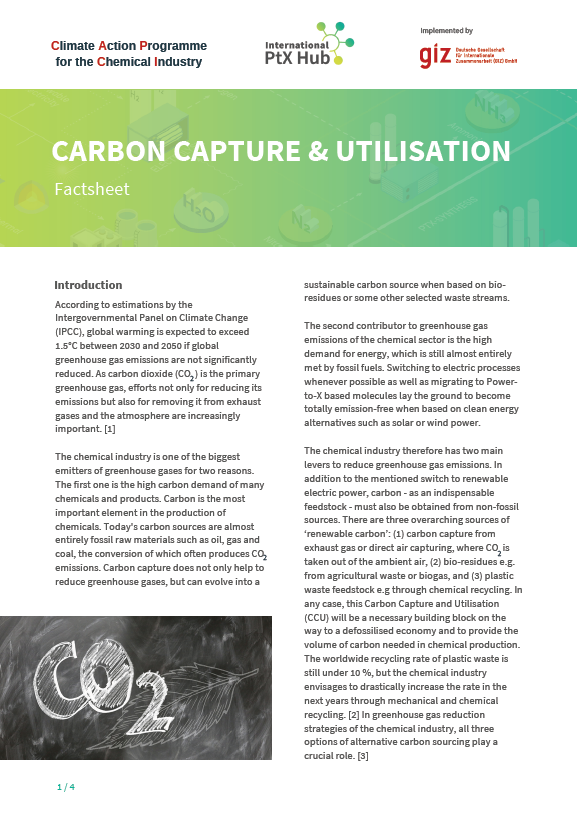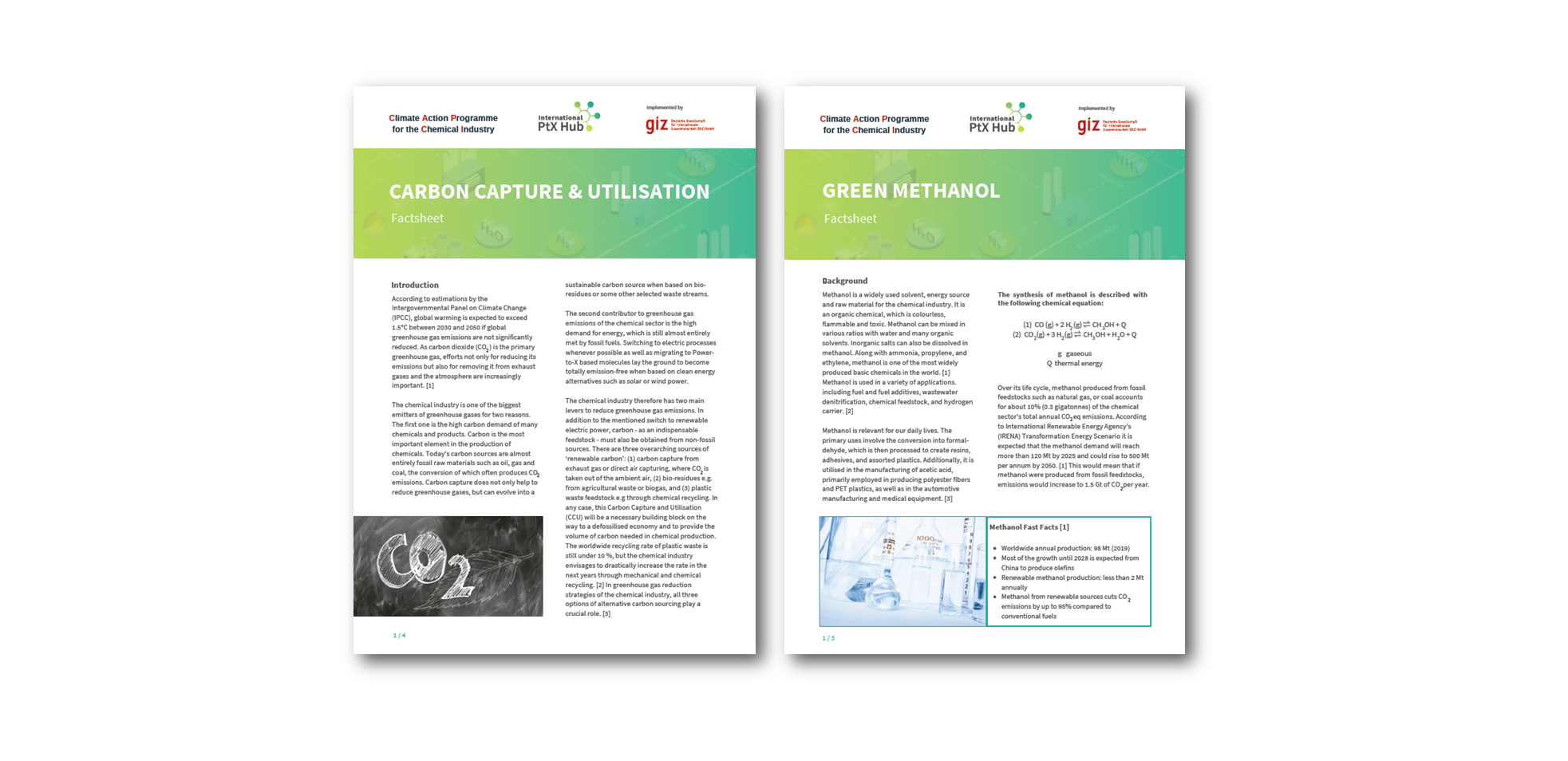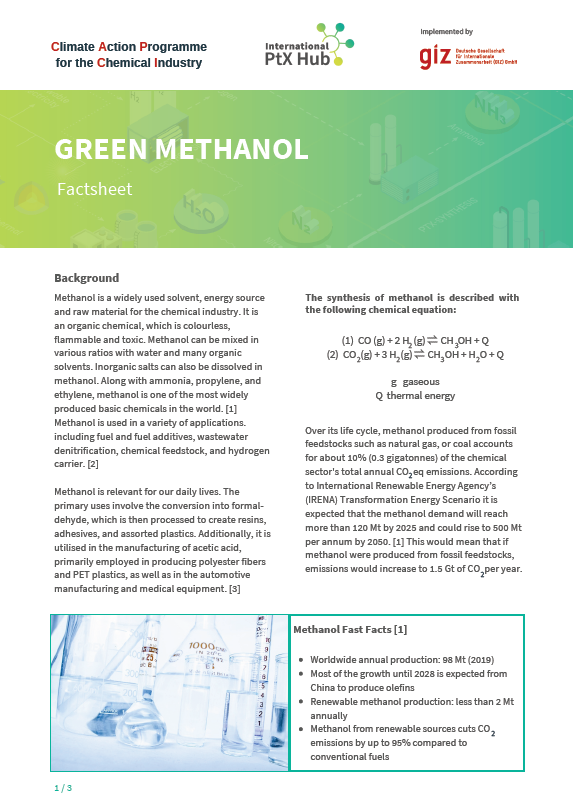The chemical industry is one of the world’s largest emitters of greenhouse gases, due to the high carbon demand of many chemicals, and the high energy demand, both of which are today mostly met by fossil fuels. So how can the chemical industry respond to its climate neutrality goals?
Two pathways – Carbon Capture and Utilisation (CCU) and Green Methanol – are explored in our recently published factsheets, developed jointly with the Climate Action Programme for the Chemical Industry (CAPCI).
Carbon is the most important element in the production of chemicals. Today’s carbon sources are almost exclusively fossil feedstocks such as oil, gas and coal, the conversion of which often results in carbon emissions. In the future, carbon – as an indispensable raw material – will have to be obtained from non-fossil sources. The first factsheet provides an introduction to Carbon Capture and Utilisation technologies for the chemical sector.
Methanol is one of the most widely produced basic chemicals in the world, with a wide range of applications including fuels and fuel additives, wastewater denitrification, chemical feedstock and as a hydrogen carrier. Over its lifecycle, methanol produced from fossil feedstocks such as natural gas or coal accounts for approximately 10% of the chemical sector’s total annual CO2eq emissions. According to the International Renewable Energy Agency (IRENA), demand for methanol will increase significantly by 2050. The second factsheet examines the two main options for producing green methanol.

The factsheet on Carbon Capture and Utilisation (CCU) provides an overview of the potential of CCU for the chemical industry to reduce its CO2 emissions. The technologies to remove CO2 from exhaust gas, Direct Air Capture (DAC) and Carbon Capture and Storage (CCS), are discussed, including their challenges and prospects.

